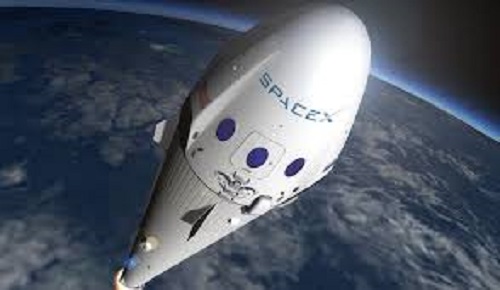
Elon Musk’s quest for a global fast internet is taking a new step. SpaceX is readying to begin production of the next-generation of its Starlink internet satellites, to add to more than its 1,000 existing first-generation satellites in orbit, CNBC reported.
An opening for a lead software engineer for Starlink hardware testing, to “define and lead [the] test software roadmap for Starlink v1 and v2.0 production” was posted on the company’s career’s page on Friday.
Musk’s rocket internet has seen an upsurge and relative success recently. In early January, SpaceX Falcon 9 rocket sent 60 more of its Starlink satellite into orbit, putting its satellite constellation at 180 satellites, and making SpaceX the company with the highest number of internet satellites in orbit.
Register for Tekedia Mini-MBA edition 18 (Sep 15 – Dec 6, 2025): registration continues.
Tekedia AI in Business Masterclass opens registrations.
Join Tekedia Capital Syndicate and co-invest in great global startups.
Register for Tekedia AI Lab: From Technical Design to Deployment.
Apart from the satellite deployment, SpaceX also has successfully landed for the 48th time, the first stage of its rocket, enabling it to be reused for a future launch.
The efforts are paying off. Late last year, SpaceX presented the Federal Communications Communication (FCC) Starlink internet performance tests, revealing download speed of about 102Mbps to 103Mbps, with upload speeds of 40.5Mbps to nearly 42Mbps, with a latency of 18 milliseconds to 19 milliseconds.
SpaceX plans to shoot more 4,425 satellites into orbit by 2024, after it has successfully launched 11, 943 satellites since it was approved by FCC in 2018. The company said in August it’s building 120 satellites per month, a production quota the company told the Commission they’re increasing launches to meet.
The v0.9 and v1.0 Starlink is the latest of its project with 1,023 deployed satellites. The new generation v1.5 and v2.0 satellites are targeted at building interconnected internet networks with thousands of satellites, to deliver high-speed internet to consumers anywhere on the planet.
“Once these satellites reach their target position, we will be able to roll out a fairly wide public beta in the northern US and hopefully southern Canada. Other countries to follow as soon as we receive regulatory approval,” Musk said in a tweet in November.
SpaceX is creating a new technology named “space lasers” by Musk, an intersatellite link which would allow the satellites to create data connections to each other – rather than individually connect to points on the ground.
Intersatellite links will also help improve the Starlink system by reducing the number of ground-based stations needed to operate globally, as well as decrease the network’s latency and increase its speed, the CNBC report said.
With selected countries that include the UK, SpaceX began a public beta program of Starlink in October. The service package is priced at $99 a month, in addition to $499 upfront cost to order the Starlink kit. The kit includes a user terminal and Wi-Fi router to connect to the satellites.
However, there have been some challenges. A public outcry went out from astronomers in April 2020 that the numerous spacecraft were appearing as bright streaks across images taken by telescopes. To fix the complaint, SpaceX started adding “sun visors” to its Starlink satellites in June.
In addition to this, SpaceX is on a collision course with Amazon’s project Kuiper, a similar satellite internet initiative of the e-commerce founder Jeff Bezos.

Musk had on Tuesday, reiterated his appeal to the FCC to allow SpaceX to move some of its Starlink satellites to lower altitude than originally planned, arguing that “it does not serve the public to hamstring Starlink today for an Amazon satellite system that is at best several years away from operation.”
Amazon’s project Kuiper plans to launch 3,236 internet satellites into low Earth orbit in a striking competition with Starlink.
Musk believes the project is far from being operational since Amazon is yet to begin producing or launching satellites, and thus, SpaceX should be allowed to alter the original altitude plan for faster internet service.
In a response to Musk’s claim, Amazon told CNBC that the Kuiper system was designed to avoid interference with Starlink, and Musk’s proposal will not only smother competition, it will create a dangerous environment for collision in space.
“The facts are simple. We designed the Kuiper System to avoid interference with Starlink, and now SpaceX wants to change the design of its system. Those changes not only create a more dangerous environment for collision in space, but they also increase radio interference for customers. Despite what SpaceX posts on Twitter, it is SpaceX’s proposed changes that would hamstring competition among satellite systems. It is clearly in SpaceX’s interest to smother competition in the cradle if they can, but it is certainly not in the public’s interest,” an Amazon spokesperson said.
The faceoff between the two richest men in the world has resulted in a horde of lobbyists from both Amazon and SpaceX going to the FCC, each trying to convince the regulator to do their bidding.
In December, Amazon spoke to the Commission’ chairman Ajit Pai, urging the regulator to limit SpaceX’s satellites to a minimum altitude of 580 kilometers until the FCC “fully evaluates the detailed record on the significant interference concerns” that Starlink’s modification will cause.



